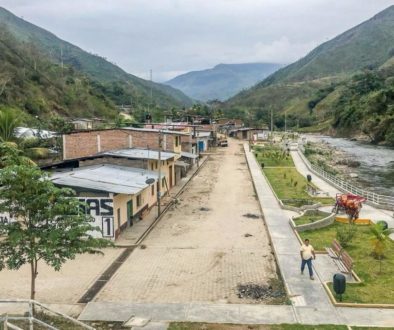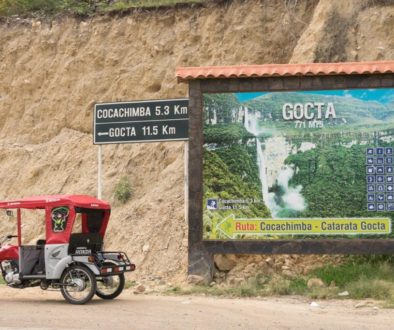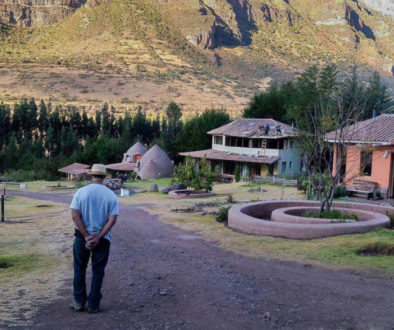Kuelap
While traveling around it’s inevitable, people will try to convince you to go lay out on their favorite beaches or walk around their favorite cities. In my experience there’s about a 50/50 chance that their favorite beach isn’t really that memorable and their favorite cities look nearly identical to all the others in the area. But, every now and then someone tells you to check out a place like Kuelap. And when you get there you know you’re somewhere special.
Bit of History
Kuelap is what appears to be a towering walled “fortress” that sits on top of La Barreta Mountain of Northeastern Peru. It was rediscovered in 1843 by a judge from nearby Chachapoyas. Protection and restoration attempts have been underway ever since. The tiny little museum at the site has a lot of interesting information including the idea that around 3,000 people lived at Kuelap. The collection of information would also lead us to believe that it was the most important location of its time. Originally built by a collection of groups overseen by the Pre-Inca Chachapoya Civilization (500-1470A.D). The construction took roughly 1,500 years to complete.
Once thought to be a fortress because of its high walls and main entrance that funneled down tight enough that only one person could enter at a time. Now, is widely accepted not to be a fortress at all. Instead, it’s consider a walled city complete with inhabitants from many walks of life.
The Chachapoya otherwise known as The Cloud Warriors thrived as a civilization up until the 15th century when it is believed that The Incan Empire conquered them. Even after this time The Chachapoya were left to live at Kuelap. Some sources say that their civilization didn’t collapse until the Spanish arrived to this area during the 16th century. Their arrival left Kuelap to be abandoned.
How to Get There
Similar to visiting Gocta Falls. Chachapoyas is the best town to base yourself out of to visit Kuelap. From here it’s an easy day trip with nearly door to door transportation with or without a guide. Coming from Lima it’s about a 22 hour bus ride or you can fly to Chiclayo and bus from there (10 hours) to Chachapoyas. We used the budget company Civa from Chiclayo for s/30 ($10). It was decent enough but do not expect luxury with the lowest priced tickets.If you want something a bit better check out Movil Tour. Also keep in mind that if coming from the south you can arrive via Cajamarca but this is a really rough road. Once in Chachapoyas if you want to join a tour just head over to the main square and compare offers. Most are around s/100 ($30). Or if you want to go independently head to the coletivo terminal at the edge of town. Ask for the next ride to Nuevo Tingo, this will cost s/7 each way (roughly $2) and take 2.5 – 3 hours to arrive. You will be dropped off at the front door of Kuelap’s transportation center. Here you pay s/20 (roughly $6) this covers a 10 minute bus ride to the 20 minute cable car ride (round trip ticket). Once exiting the cable car you pay an entrance of s/20 for adults. You can enter the small museum and then head up the mostly stone path for 20 minutes until you reach the site.
There is also a hiking path from Tingo. (Keep in mind that Tingo and Nuevo Tingo are two separate places). From what I have gathered you’ll be faced with ½ day mostly inclining hike with little to no shaded areas. There are also no places to buy anything once hiking so bring enough water and snacks if you decide to go this route. The route is said to be adequately marked.
Kuelap Site
 Once you ascend the path from the museum your first glimpse will be the towering outer walls. They measure anywhere between 3 meters and 20 meters. You’ll follow the one way circuit to the right. Unfortunately during our visit the main entrance was closed. We didn’t get to walk through the funneling entrance that lead people to once believe that this place was a fortress. Instead we follow the path towards a second entrance admiring the sheer size of the place. And playing with the occasional puppy. Once inside the path will lead you to its first main structure. Torreon on the North side of the complex is believed to have been used for ritual and symbolic purposes. It’s one of the few remaining structures still intact. Take your selfies and continue back the way you came.
Once you ascend the path from the museum your first glimpse will be the towering outer walls. They measure anywhere between 3 meters and 20 meters. You’ll follow the one way circuit to the right. Unfortunately during our visit the main entrance was closed. We didn’t get to walk through the funneling entrance that lead people to once believe that this place was a fortress. Instead we follow the path towards a second entrance admiring the sheer size of the place. And playing with the occasional puppy. Once inside the path will lead you to its first main structure. Torreon on the North side of the complex is believed to have been used for ritual and symbolic purposes. It’s one of the few remaining structures still intact. Take your selfies and continue back the way you came.
Next you’ll come across Callanca which is believed to have been for indoor rituals and also functioned as living accommodations for guests. At this point the only remains of Callanca are the foundations.
Continue on passing many of the most common construction Vivienda Tipicas which are the circular houses which once had thatched roofs.
Continue the path alongside the llamas (if you’re lucky). There is guaranteed to be a wait here if you want your obligatory llama selfie. Snap away then head towards the main temple.
The main temple was the primary location for religious rituals. Another one of the few structures intact at this time.
The last structure that you’ll visit before walking the path towards the exit will be the Plataforma Circular. A circular platform that had eight circular buildings on top. This structure is said to have been closely connected to the operations of the main temple. Following this site go back the way you came and exit on your left. Follow the path back towards the front of the complex. Here you are pretty close to the outer walls and can get a sense of how tall they really are. This will pretty much end your Kuelap circuit. You can lounge around and take it all in. Just remember the last returning cable car is said to be 3pm by onsite workers (the sign says 4pm).
Returning to Chachapoyas
This is as simple as walking out the door of the Kuelap bus/cable car terminal. Wave down the next passing colectivo for a s/7 return (roughly $2). They run into the evening so you won’t have any problems staying at Kuelap until the final closing time.
Afterthoughts
Kuelap is great, there is no doubt about that. The historical significance of the site speaks for itself. If you have time in your itinerary I would recommend visiting. The best part will be the towering walls. They will remind you of how small you are in the world. However, to claim this is the Machu Picchu of The North like many google searches have claimed is an overstatement (in my opinion). I’ve been to M.P. twice in two years. Yes, M.P. is one of the biggest tourist traps on the planet. But if you have ever been there then you know M.P. truly deserves its status. Another disappointment that I noted during my Kuelap visit is that the thatched roof houses that are the poster child of the site via google and every tourist agency offering the tour are nonexistent. Most of the houses are down to the foundations rarely above waist level. At the moment there is one intact replica just outside the walls. The truth is Kuelap is not nearly as intact as you are lead to believe. This doesn’t take away from its historical significance, but it’s a minor bump in what you might imagine while planning your visit.













